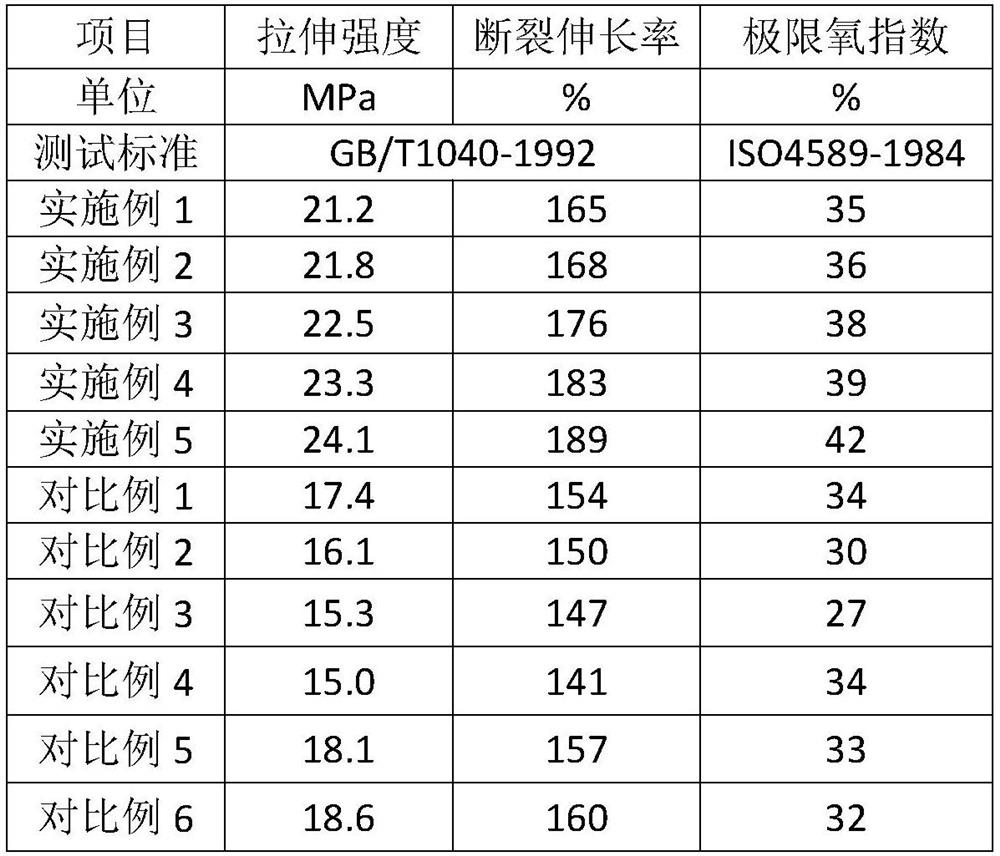Environment-friendly plastic and preparation method thereof
A technology of environmentally friendly plastics and raw materials, applied in the field of polymer materials, can solve problems such as oxidation resistance, weak impact resistance, difficulty in large-scale production, and large consumption of agricultural products, achieving good oxidation resistance, low environmental pollution, The effect of improving mechanical properties
- Summary
- Abstract
- Description
- Claims
- Application Information
AI Technical Summary
Problems solved by technology
Method used
Image
Examples
Embodiment 1
[0027] An environmentally friendly plastic, characterized in that it is made from the following raw materials in parts by weight: 15 parts of cinnamic acid modified plant fibers, 30 parts of vinyl β-cyclodextrin quaternary ammonium salt, 2-vinylpyrazine / Methyl vinyl silfluorene / 1,3-adamantane diol monoacrylate copolymer 45 parts, azobisisobutyronitrile 1 part, epoxy succinic acid 4 parts, epoxy-terminated hyperbranched polyphosphate 5 share.
[0028] The preparation method of the cinnamic acid modified plant fiber comprises the following steps: adding plant fiber and cinnamic acid to N,N-dimethylformamide, and then adding 4-dimethylaminopyridine, 1-ethyl -(3-Dimethylaminopropyl) carbodiimide hydrochloride, stirred and reacted at 50°C for 6 hours, then precipitated in water, and then dried the precipitated polymer in a vacuum oven at 80°C To constant weight, obtain cinnamic acid modified plant fiber; said plant fiber, cinnamic acid, N,N-dimethylformamide, 4-dimethylaminopyrid...
Embodiment 2
[0032] An environmentally friendly plastic, characterized in that it is made from the following raw materials in parts by weight: 17 parts of cinnamic acid modified plant fibers, 32 parts of vinyl β-cyclodextrin quaternary ammonium salts, 2-vinylpyrazine / Methyl vinyl silfluorene / 1,3-adamantane diol monoacrylate copolymer 48 parts, azobisisoheptanonitrile 1.2 parts, epoxy succinic acid 4.5 parts, epoxy-terminated hyperbranched polyphosphate 6 share.
[0033] The preparation method of the cinnamic acid modified plant fiber comprises the following steps: adding plant fiber and cinnamic acid to tetrahydrofuran, then adding 4-dimethylaminopyridine, 1-ethyl-(3-dimethylamino Propyl) carbodiimide hydrochloride, stirred and reacted at 53°C for 7 hours, then precipitated in water, and then dried the precipitated polymer to constant weight in a vacuum oven at 83°C to obtain modified cinnamic acid Plant fiber; the mass ratio of the plant fiber, cinnamic acid, THF, 4-dimethylaminopyridin...
Embodiment 3
[0037] An environmentally friendly plastic, characterized in that it is made from the following raw materials in parts by weight: 20 parts of cinnamic acid modified plant fibers, 35 parts of vinyl β-cyclodextrin quaternary ammonium salts, 2-vinylpyrazine / Methyl vinyl silfluorene / 1,3-adamantane diol monoacrylate copolymer 50 parts, azobisisobutyronitrile 1.5 parts, epoxy succinic acid 5 parts, epoxy-terminated hyperbranched polyphosphate 6.5 parts share.
[0038] The preparation method of the cinnamic acid modified plant fiber comprises the following steps: adding plant fiber and cinnamic acid to N-methylpyrrolidone, then adding 4-dimethylaminopyridine, 1-ethyl-(3- Dimethylaminopropyl) carbodiimide hydrochloride, stirred and reacted at 55°C for 8 hours, then precipitated in water, then dried the precipitated polymer to constant weight at 85°C in a vacuum oven, Obtain cinnamic acid modified plant fiber; said plant fiber, cinnamic acid, N-methylpyrrolidone, 4-dimethylaminopyrid...
PUM
 Login to View More
Login to View More Abstract
Description
Claims
Application Information
 Login to View More
Login to View More - R&D
- Intellectual Property
- Life Sciences
- Materials
- Tech Scout
- Unparalleled Data Quality
- Higher Quality Content
- 60% Fewer Hallucinations
Browse by: Latest US Patents, China's latest patents, Technical Efficacy Thesaurus, Application Domain, Technology Topic, Popular Technical Reports.
© 2025 PatSnap. All rights reserved.Legal|Privacy policy|Modern Slavery Act Transparency Statement|Sitemap|About US| Contact US: help@patsnap.com

